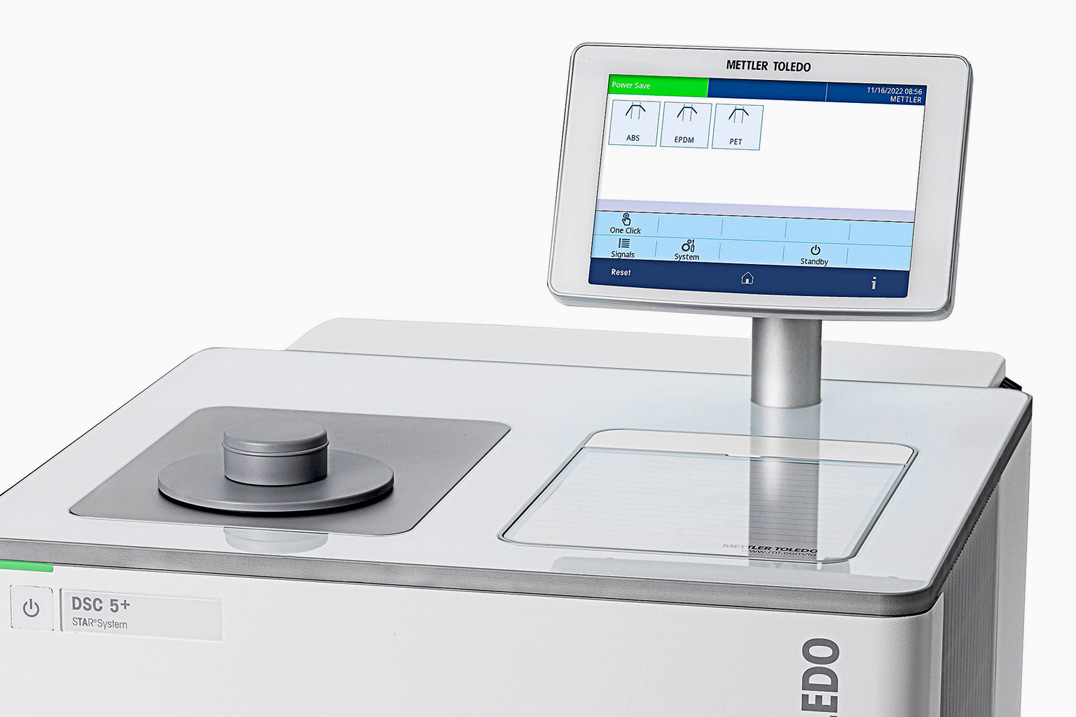Power Compensation Mode
Outstanding Resolution for the Separation of Close-Lying Effects
How does power compensation work?
In power compensation mode, the aim is to keep the temperature difference between the sample and reference sides as close to zero as possible. On the MMS DSC sensor, this is achieved by two local heaters on the sensor, one below the sample and one below the reference.
The temperature difference between the sample and reference (ΔT) is zero as long as there is no thermal effect in the sample. A thermal effect will cause the sample temperature to deviate from the reference temperature. For example, an exothermic effect, such as crystallization, releases energy and the temperature on the sample side increases. The heater on the reference side will then activate, increasing the reference temperature until it matches the sample temperature (ΔT = 0). When there is an endothermic effect in the sample, such as melting, the sample becomes cooler than the reference. The sample heater will then activate, increasing the sample temperature until it matches the reference temperature.
What is the benefit of power compensation mode in the new DSC 5+?
The amount of power introduced by the sensor heaters to bring ΔT to zero is very precisely measured. This results in a heat flow signal with outstanding resolution, and excellent separation of close-lying effects.





